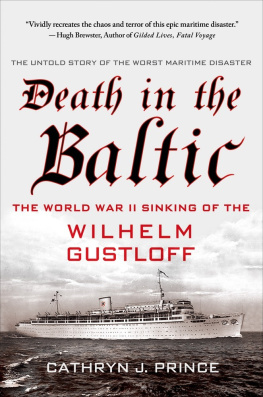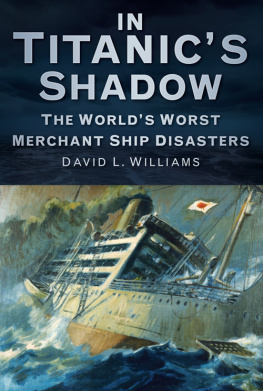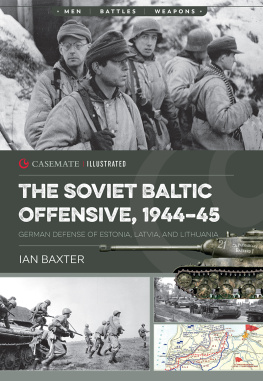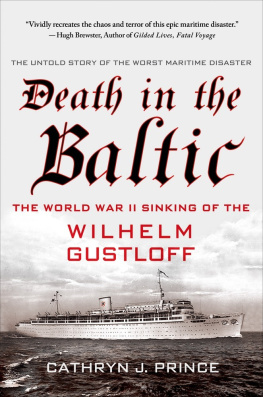Death in the
Baltic
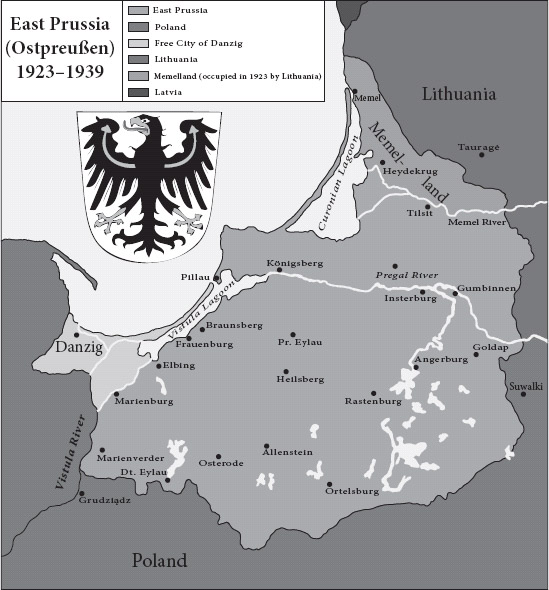

Death in the
Baltic
THE WORLD WAR II SINKING OF THE
WILHELM GUSTLOFF
CATHRYN J. PRINCE


DEATH IN THE BALTIC
Copyright Cathryn Prince, 2013.
All rights reserved.
First published in 2013 by PALGRAVE MACMILLAN in the U.S. a division of St. Martins Press LLC, 175 Fifth Avenue, New York, NY 10010.
Where this book is distributed in the UK, Europe and the rest of the world, this is by Palgrave Macmillan, a division of Macmillan Publishers Limited, registered in England, company number 785998, of Houndmills, Basingstoke, Hampshire RG21 6XS.
Palgrave Macmillan is the global academic imprint of the above companies and has companies and representatives throughout the world.
Palgrave and Macmillan are registered trademarks in the United States, the United Kingdom, Europe and other countries.
ISBN: 978-0-230-34156-2
Library of Congress Cataloging-in-Publication Data
Prince, Cathryn J., 1969
Death in the Baltic : the sinking of the Wilhelm Gustloff / Cathryn J. Prince.
pages cm
Includes bibliographical references.
ISBN-13: 978-0-230-34156-2
ISBN-10: 0-230-34156-X
1. Wilhelm Gustloff (Ship) 2. ShipwrecksBaltic SeaHistory20th century. 3. GermansPrussia, East (Poland and Russia)History20th century. 4. RefugeesPrussia, East (Poland and Russia)History20th century. 5. World War, 19391945Evacuation of civiliansPrussia, East (Poland and Russia) 6. Shipwreck victimsInterviews. 7. World War, 19391945Baltic Sea. 8. World War, 19391945Naval operationsSubmarine. 9. World War, 19391945Naval operations, Soviet. I. Title.
D772.3.P76 2013
940.53161089310438dc23
2012030182
A catalogue record of the book is available from the British Library.
Design by Letra Libre
First edition: April 2013
10 9 8 7 6 5 4 3 2 1
Printed in the United States of America.
For Nathan and Zo
ACKNOWLEDGMENTS
Although writing can at times be a lonely process, it is not possible to complete a book alone. I am therefore grateful for having so many people in my life who were present during the writing of this book.
Many thanks to the archivists at the United States Holocaust Memorial Museum in Washington, DC, and at the National Archives and Records Administration in College Park, Maryland. Thanks to Simon Hessdorfer of the Bundesarchiv in Bayreuth, Germany, for answering my questions from afar. Thanks to Wendy Gulley, curator at the Submarine Force Museum in New London, Connecticut. Many thanks to Marco Hedler for his valuable research assistance and to Edward Petruskevich, curator of the online Wilhelm Gustloff Museum. Thanks are also due to the many librarians and professors who pointed me in the right direction when it came to tracking down bits and pieces of history.
I am incredibly grateful to Jill D. Swenson and the entire team at Swenson Book Development. Jill, thank you for helping develop the initial book proposal, for helping me shepherd it through the writing process, and most of all, for your friendship and advice.
My deep thanks to my editor at Palgrave Macmillan, Luba Ostashevsky, for recognizing the importance of this story and giving it a home. Your insightful edits helped drive the narrative of this story and kept it on track. Id like to also recognize Laura Lancaster and the entire team at Palgrave Macmillan, including Andrew Varhol, Victoria Wallis, Allison Frascatore, and Roberta Melville, as well as the art department for their exceptional and bold book jacket design.
My heartfelt thanks go to the survivors and their families for opening their doors to me, both literally and figuratively, for sharing their stories, photographs, diaries, and letters.
For my parents, Marvin and Norma Prince, the words thank you will never adequately express how much your encouragement and enthusiasm for what I do means to me.
My children, Nathan and Zo: Perched upon my soul, you are my laughter and light.
Pierre: From the start you knew this was not going to be an easy book to write. I am blessed to have you by my side. You are my yesterday, you are my today, and you are my tomorrow.
INTRODUCTION
Sometime after the publication of my second book, and well before the idea for my third book took root, my father mentioned a startling fact. He told me about a small passage in a history trivia book that mentioned a German ship sunk at the end of the war in Europe, in January 1945, which ranked as the highest loss of life in peacetime or wartime. He said the sinking made the Titanic look like a fender bender.
Few people outside the military took note of the sinking and few American historians have written about it. The most information I found consisted of footnotes in World War Two histories mentioning the bare facts: that the Wilhelm Gustloff was sunk by a Soviet torpedo early in the morning on January 30, 1945, and that more than 9,000 refugees perished in the frigid waters of the Baltic. I had no explanation for the lack of news articles. Was it because it was something that happened to our enemy? Was it because there were no Americans aboard? As has happened before, my reporters instincts kicked in, and I promptly began researching the Wilhelm Gustloff.
Looking at January 30, 1945, and the weeks, months, and years before that date allows us to gain further insight into one of the most tumultuous times in history. By hearing from a few whose stories have not yet been told, we gain a little more understanding of what millions endured.
I got the contact information for Horst Woit, who had been a 10-year-old boy aboard the Wilhelm Gustloff with his mother Meta, from a Canadian documentarian I found through a website. After the sinking, Horst Woit lived behind the iron curtain in Soviet-occupied East Germany for several years until immigrating to Canada in the late 1940s.
My mother and I traveled to Canada to meet Horst. Wearing a faded blue sweatshirt and jeans, Horst waited for us outside, his dog beside him. We hugged hello. It seemed a natural greeting. Nearly 70 years later, the sinking continues to haunt Horst. It is something he thinks about every day. Though the loss of life was massive, and as desperate as the conditions were that forced Horst and his mother to flee, stories like Horsts have remained largely unknown, in part because it happened in wartime to refugees and naval personnel from Nazi East Prussia. Growing up in Canada after the war, Horst told us, he read stories about the Titanicwhat a horrific accident it had been, the grisly details of how almost 2,000 people perished in the frozen waters. In those moments he would want to yell, Well, let me tell you about a sinking nearly five times as bad as the Titanic.
I knew after the first hour of our visit that Horsts story and those of the other survivors had to be told. Stories like Eva Dorn Rothschilds, who at 86 still shows the same spirit that got her kicked out of Hitler Youth when she was barely 13. Or that of Helga Reuter and her parents, Kurt and Marta. They had owned a furniture store in Knigsberg until the Nazis requisitioned it and turned it into a uniform factory. Kurt and his wife did what they could to make sure the workers were well fed and clothed. I visited Helga in Las Vegas, Nevada, where she now lives in a one-room apartment in her sons house.
Next page
